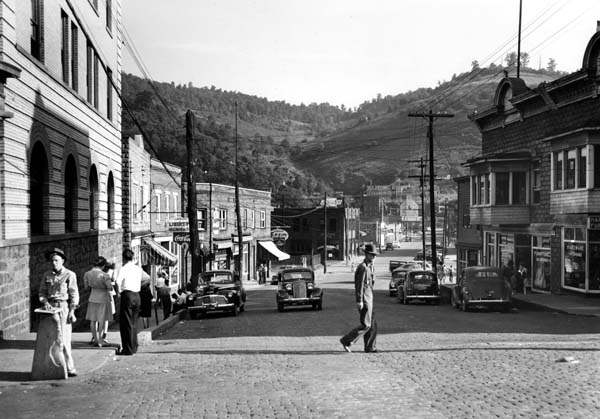Richwood

This classic snapshot of small-town America shows how Richwood's Oakford Avenue looked in the 1940s. It was taken for the
Farm Security Administration by John Collier, Jr., who would go on to pioneer the use of photography in anthropology. Courtesy of Library of Congress.
Richwood was one of the first towns to feel the brunt of the floods. As four-to-six inches of rain fell on June 23, the Cherry River and its tributaries began rushing through the town. The torrent led to one of the many stories of brave rescue involved with the flood. As the waters were rising swiftly at the Nicholas County Nursing and Rehabilitation Center, staff moved 90 elderly patients—many of whom couldn’t walk easily on their own—out of harm’s way by using the nursing home’s van and an old school bus borrowed from the Liberty Baptist Church.
Although there were no reported deaths in Richwood, the town was devastated by the June 2016 floods. Richwood is located at the confluence of the North Fork and South Fork of the Cherry River. And like Clendenin, Richwood is primarily a product of the railroad, which opened up the resources of this part of Nicholas County to development.
It was founded by the Cherry River Boom and Lumber Company and incorporated in 1901. Disaster struck in 1921, when a fire consumed much of the downtown. Richwood rebuilt, though, in a magnificent way, and many of the town’s stately homes date to this time period.
By the 1930s, Richwood’s population had soared to 7,000, and the town boasted the world’s largest shoe leather tannery and wooden clothespin factories. In addition to these trivia answers, Richwood is also home to one of the longest-running ramp festivals in the world. Thousands come each April to celebrate the Feast of the Ramson and to sample the wild leek that has gone from an Appalachian culinary curiosity to a gourmet sensation in major cities.
You can read the rest of this article in this issue of Goldenseal, available in bookstores, libraries or direct from Goldenseal.